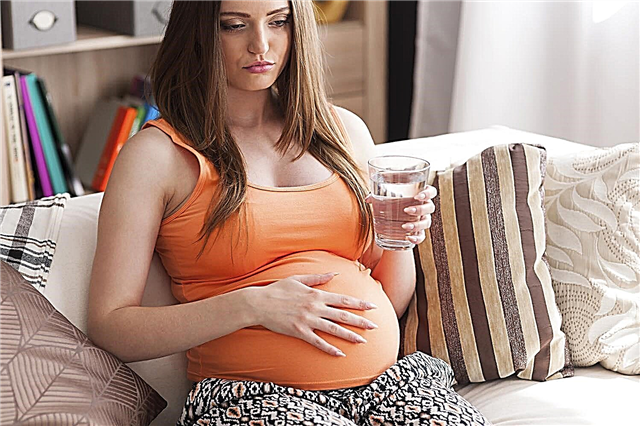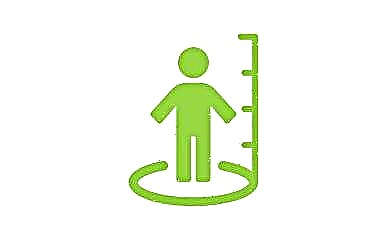
Amoxicillin is one of the most popular penicillin antibiotics prescribed for various bacterial infections. It comes in several forms, among which there is a tablet. Can children take Amoxicillin tablets and in what dosage is it used?
Release form
Tableted Amoxicillin is presented in two options:
- Regular pills. They can contain as much as 250 mg of the active ingredient or 500 mg. One package contains 10 or 20 such tablets.
- Film-coated tablets. Each of these tablets contains 500 mg of active compound, and one pack contains 10, 20, 30 or more tablets.
In addition, the drug is available in capsules with an active substance content of 250 or 500 mg. But for children are especially in demand for medicine in vials, inside which there are granules. By pouring water into such a bottle, a sweet suspension is obtained.

Composition
The main substance that provides the drug with a therapeutic effect is presented amoxicillin trihydrate. In tablets, this compound is supplemented with magnesium stearate and potato starch. Coated tablets may also contain hypromellose, talc, titanium dioxide and other substances.
Operating principle
Once in the digestive tract, Amoxicillin is very quickly absorbed, as a result of which its maximum concentration in the bloodstream is observed after 1-2 hours. The medicine is not destroyed in the stomach, and meals do not affect its absorption. Together with the blood flow, the drug spreads throughout the body, getting into sputum, urine, intestinal mucosa, middle ear fluid, gallbladder, pleural fluid and other tissues in large quantities.
The spectrum of the antimicrobial effect of Amoxicillin is quite large. The medicine has a bactericidal effect on such microorganisms:
- Streptococcus.
- Shigella.
- Salmonella.
- Staphylococcus aureus.
- Corinebacterium.
- Proteus.
- Enterococcus.
- Escherichia coli.
- Gonococcus.
- Campylobacter.
- Listeria.
- Klebsiella.
- Helicobacter.
- Chlamydia.
- Treponema.
- Clostridium.
- Meningococcus.
- Peptostreptococcus.
At the same time, with respect to some species of Proteus, bacteroids, pseudomonads, serratia, enterobacter, some staphylococci, as well as viruses, mycoplasmas and rickettsia, Amoxicillin is not active.
Indications
The use of Amoxicillin is justified for infections caused by such a penicillin antibiotic. The drug is prescribed for:
- Angina.
- Pharyngitis.
- Sinusitis.
- Otitis media.
- Bacterial meningitis.
- Bronchitis.
- Salmonellosis.
- Dysentery.
- Leptospirosis.
- Pneumonia.
- Listeriosis.
- Gonorrhea.
- Peritonitis.
- Peptic ulcer disease.
- Cholangitis.
- Urethritis.
- Sepsis.
- Cyst.
- Bacterial skin infections and many other diseases.

From what age is it allowed to take?
In pediatrics, Amoxicillin is prescribed from birth, but tablets are not recommended for children under 5 years of age. If a medicine is prescribed for a child who is not yet five years old (for example, at 3 years old), then granules are used, from which a suspension is prepared.
Contraindications
The use of Amoxicillin is prohibited in case of hypersensitivity to such a drug and other antibacterial agents from the groups of pecillin and cephalosporin drugs.
Also contraindications to the appointment of this medication are:
- Liver dysfunction.
- Allergic diathesis.
- Pollinosis.
- Infectious mononucleosis.
- Renal dysfunction.
- Bronchial asthma.
- Lymphocytic leukemia.
- Breast-feeding.
Without a doctor's prescription, Amoxicillin should not be given to children who have had digestive tract diseases or bleeding in the past.
Watch the video in which Konstantin Mandra talks about the rules for using antibiotics:
Side effects
Sometimes the child's body reacts to taking Amoxicillin:
- Allergic reaction for example, rhinitis, skin redness, swelling of the skin, conjunctivitis, or hives. It is extremely rare for such an antibiotic to cause fever, dermatitis, anaphylactic shock, and other serious allergy-related problems.
- Digestive disorders among which the most common are nausea and loose stools. The medicine can provoke the development of stomatitis, enterocolitis or dysbiosis. In some children, taste is disturbed, vomiting appears, and the tongue becomes inflamed. Also, Amoxicillin can adversely affect liver function.
- Disorders of the central nervous system, for example, anxiety, trouble falling asleep, depressed mood, headache, restlessness, confusion, dizziness, and sometimes seizures.
- Changes in the blood test. When using Amoxicillin, a decrease in the level of cellular elements is often detected.
- Palpitations or shortness of breath.
- The development of candidiasis or the addition of another bacterial infection.

Instructions for use and dosage
- Amoxicillin tablets are offered to the child to swallow without chewing with water.
- For children over five years old (for example, at 7 years old), a single dose of the drug will be 250 mg, therefore, tablets with this dosage are used until the age of 10.
- A child over 10 years old can already be given tablets containing 500 mg of amoxicillin, since a single dose at this age will be 1 such tablet. Also, children of ten or older can be given 2 tablets of 250 mg amoxicillin at one time.
- If the infection is severe, the dosage may be increased to 750-1000 mg per dose. In this case, only the attending physician has the right to make a decision on such an increase in dose.
- The frequency of taking Amoxicillin is 3 times a day, and the duration of treatment is determined by the doctor, taking into account the disease. The drug can be prescribed for a period of 5 to 12 days.
- When the clinical symptoms of infection have disappeared, it is recommended to take Amoxicillin for another 2-3 days. With long-term treatment, it is important to monitor blood counts, as well as kidney and liver function.


Overdose
Too high a dose of Amoxicillin causes diarrhea and vomiting, resulting in dehydration. To treat this condition, first, the stomach is washed and sorbents or laxatives are given, and then attention is paid to restoring the balance of fluid and electrolytes. In severe poisoning, hemodialysis is indicated.
Interaction with other drugs
- If you take Amoxicillin together with antacids or laxatives, the absorption of the antibiotic will deteriorate. The same effect is observed when combined with aminoglycosides and glucosamine, but when supplemented with Ascorbic acid, Amoxicillin is absorbed better.
- The appointment of Amoxicillin together with other bactericidal antimicrobial drugs, for example, Rifampicin, cephalosporins or Vancomycin, will lead to an increase in the effect of therapy. But on drugs with bacteriostatic action, Amoxicillin acts as an antagonist. If given during treatment with macrolides, sulfonamides, lincosamides, and other bacteria-inhibiting drugs, it will reduce the therapeutic effect.
- The use of Amoxicillin enhances the effect of indirect anticoagulants.
- If the child is taking anti-inflammatory drugs (non-steroidal), diuretics, allopurinol, tubular secretion blockers and some other medicines, this will increase the concentration of amoxicillin in the blood.
- If Amoxicillin is prescribed together with Metronidazole, the negative effects on the liver from these drugs will increase. This combination of drugs is contraindicated under the age of 18.

Terms of sale
To buy a tablet form of Amoxicillin in a pharmacy, you need to show a prescription from a doctor. The price of 20 tablets containing 250 mg of the active ingredient is on average 30-40 rubles. For a pack of 20 tablets with a higher concentration of amoxicillin (500 mg), you need to pay from 50 to 70 rubles.
Storage conditions and shelf life
It is advised to keep the drug in a dry place at room temperature (not higher than + 25 ° C). It is also important to ensure that the medicine is not readily available to young children. The shelf life of tableted Amoxicillin, depending on the manufacturer, is 2-4 years.
You may be interested in watching the video of the program of Dr. E. Komarovsky, in which he talks in detail about the benefits and harms of taking antibiotics by children in the treatment of various diseases:
Reviews
There are different reviews about the treatment with Amoxicillin. AT in most cases, mothers who gave such an antibiotic as prescribed by a doctor at a temperature caused by a bacterial infection (for example, with angina or bronchitis) note its high efficiency. They confirm that the drug quickly enough affects the pathogen and helps the child get rid of the infectious disease.
Most often, children use a suspension, since it can be difficult for a child to swallow pills. Among the disadvantages of medication, side effects are most often mentioned. In many children, Amoxicillin tablets cause upset stools, nausea, skin rash, and dysbiosis. Moms do not like the need to drink the drug three times a day, so they often prefer other antibiotics that can be taken once a day.

Analogs
You can replace Amoxicillin with another medicine with the same active substance, for example:
- Dissolving tablets Flemoxin Solutab.
- Capsules or tablets Amosin... Such a medicine is also available in powder, from which a suspension is made for small children.
- Suspension Ospamox, for the preparation of which the drug is produced in granules and in powder. Also, this medicine is presented in pharmacies in several types of tablets and capsules.
- Pills Ecobol.
- Hikontsil powder or capsules.
In addition, instead of Amoxicillin, the pediatrician may prescribe another antibiotic from the group of penicillin drugs. This could be:
- Oxacillin.
- Ampicillin.
- Ampiox.
- Amoxiclav... In such a preparation, clavulanic acid was added to amoxicillin to increase its effectiveness.



